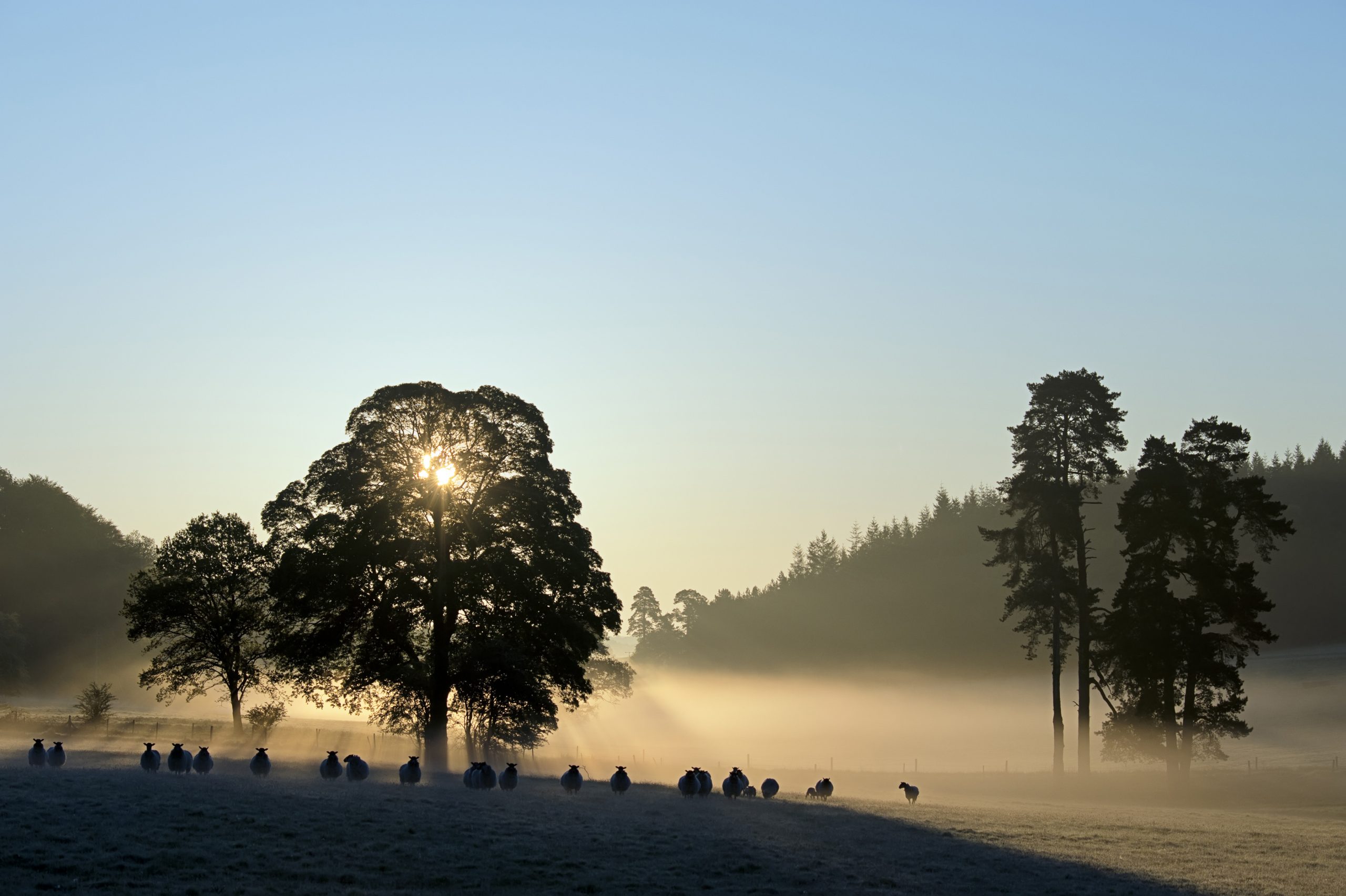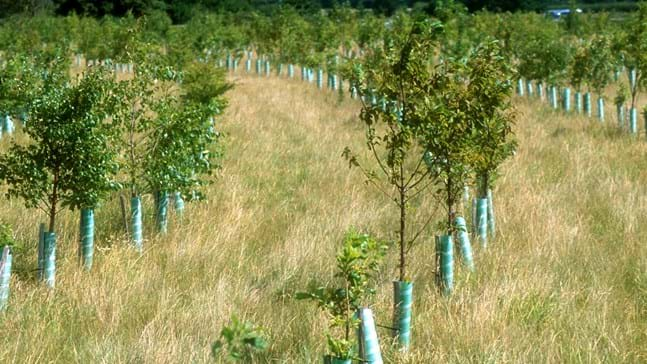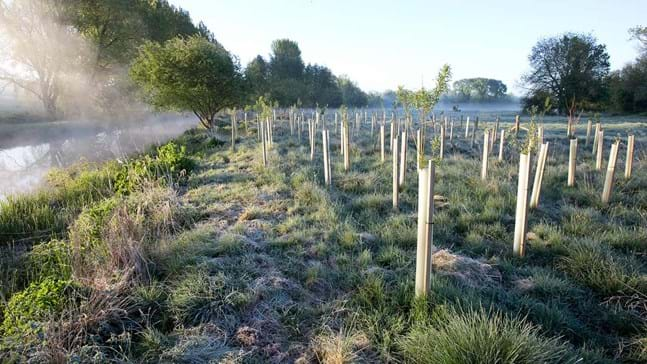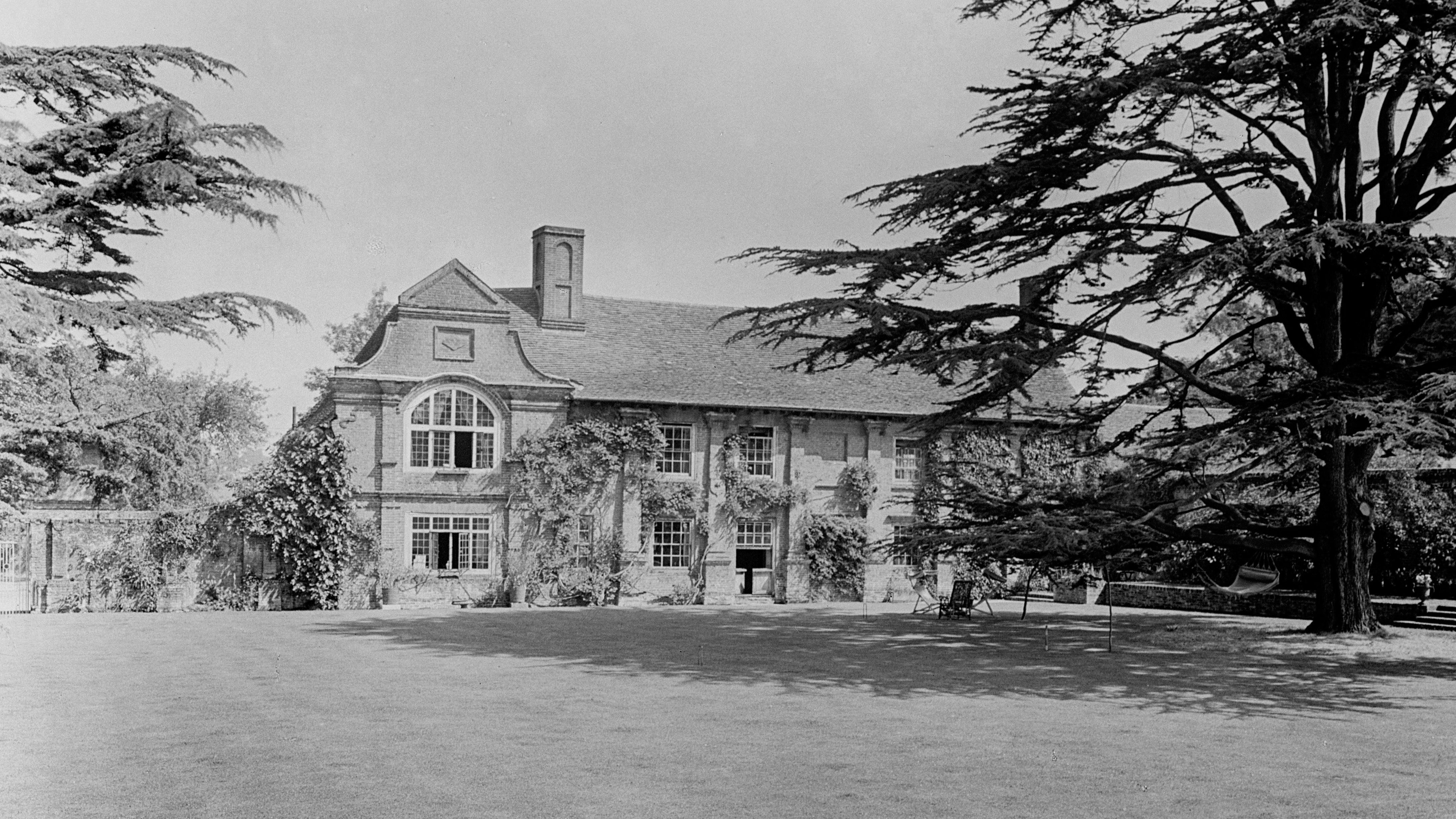Trees can be a win-win for farming and the environment
Increasing biodiversity, boosting carbon capture, preventing soil erosion, reducing flood risk… these are just some of the many benefits of planting trees, and The Woodland Trust's MOREwoods scheme can help.

Planting trees has an extraordinary effect on the world around us. Not only are they magnificent natural structures in our landscape, they soak up carbon dioxide. A single broadleaf tree will ingest over a tonne in its 100-year lifespan, and provide a habitat for a huge range of flora and fauna; just one oak tree provides a home for around 250 species of insects — before you even start counting birds and other creatures.
There are other positives for the land, too. Woodland planted in the right way can reduce flooding, provide shelter for livestock and act as a barrier to protect other land from harsh weather.
The Woodland Trust has decades of experience helping people to plant trees and hedgerows, and now has two subsidised planting schemes, MOREwoods and MOREhedges, funded by Lloyds Bank, offering both finance and expertise. One man who took advantage of the MOREwoods scheme is George Atkin, a farmer whose family have been tending their 283 hectares of land in Norfolk for six generations.

Keen to protect the land for future generations, George wanted to plant native UKISG (UK and Ireland sourced and grown) trees. Through the MOREwoods scheme, he turned half a hectare of his land into woodland, some of it as a block close to the farmhouse, and some as additional planting in an existing small wood. At the top of George’s list of motivations were carbon-capture and creating wildlife habitats — but he found there were other benefits, too.
The trees act as windbreaks, offering the sheep protection, and have greatly enhanced the landscape. “These woods mark the start of an environmental journey for me,” he says, “the foundation of ensuring the farm is passed on in a better condition for the next generation.”
In the winter of 2016, George roped in some friends to help him get the trees into the ground. Over two days of hard work, the saplings were dug in, then woodchip was placed on top of the disturbed soil to keep in moisture. One more job followed: the planting of 400 metres of hedging between the two areas of woodland. The hedge acts as a ‘wildlife corridor’ – a highway providing local wildlife with safe passage from one wood to the next.

The Woodland Trust’s sister scheme, MOREhedges, is designed for anyone with space for hedging of 100 metres or longer. As well as a mix of suitable hedgerow species, the Trust can provide full-height trees to be staggered every six metres along the row, together with funding and plant protection.
Of course, the work involved with a woodland doesn’t stop at the planting; the Woodland Trust’s experts also advise on management of the woods. George’s woodland will be coppiced, providing fuel for the farmhouse. Every hectare of mixed, broadleaf coppice provides about three tonnes of air-dried wood fuel a year.
As for the future? George has since planted an orchard and is considering integrating trees among his arable crops to create an agroforestry system. He also plans to collect seeds from some of his farm’s oldest trees to do his own propagation, and to plant black poplars — a rare native tree that can be coppiced or pollarded.

“I am very thankful to the Woodland Trust, not only for trees but, more importantly, UK-sourced woodland regeneration and new plantings,” adds George. “I hope [the Trust] will continue to help communities, schools, farmers, landowners and individuals do their bit for improving and increasing our country’s native woodland.”
To find out more about planting your own woodland or hedgerow with the MOREwoods and MOREhedges schemes, funded by Lloyds Bank, visit www.woodlandtrust.org.uk/plant.

Exquisite houses, the beauty of Nature, and how to get the most from your life, straight to your inbox.
-
 Happy New(foundland) year to all
Happy New(foundland) year to allGentle, heroic and devoted — there is no better dog with which to welcome the year ahead.
-
 The real-life Manderley, and the other country houses that inspired Daphne du Maurier
The real-life Manderley, and the other country houses that inspired Daphne du MaurierThe writer Daphne du Maurier was fascinated by the English country house. Jeremy Musson explores her evocation of these buildings with the help of photographs from the Country Life Image Archive and a series of specially commissioned drawings by Matthew Rice.
-
 Jewels of the Mediterranean: Luxury multi-generational villa holidays
Jewels of the Mediterranean: Luxury multi-generational villa holidaysThe Thinking Traveller have some of the finest villas in the Mediterranean on their books for multi-generational holidays. Here are just a few of the highlights.
-
 Code8: Beauty on Burlington Arcade
Code8: Beauty on Burlington ArcadeCome along Burlington Arcade with Hetty Lintell to visit beauty gurus Code8, and try their new Day To Night Foundation.
-
 The gift of growing
The gift of growingEntirely built to suit your needs, a bespoke Alitex greenhouse not only helps you nurture flowers and vegetables, but also offers a tranquil retreat from the pressures of daily life.
-
 The ultimate Canadian train journey
The ultimate Canadian train journeyExperience the spectacular scenery of the Canadian Rockies onboard the luxury and top-tier service of Rocky Mountaineer.
-
 Diamonds are a man’s best friend
Diamonds are a man’s best friendMale interest in jewellery is on the rise, with gypsy and signet rings proving especially popular, according to renowned jeweller Hancocks.
-
 The Art of Lighting: Four of Britain's top designers share their best tips for choosing lighting
The Art of Lighting: Four of Britain's top designers share their best tips for choosing lightingAt a recent panel discussion hosted at Vaughan’s London showroom during Focus/24, interior designers Emma Pocock and Sarah Peake, lighting designer Jo Mann of Lighthouse Designs and Richard Smith of Vaughan shared their top 10 tips on choosing lighting.
-
 The beauty of bespoke: A journey with Julia Lloyd George
The beauty of bespoke: A journey with Julia Lloyd GeorgeGoing bespoke with Julia Lloyd George means getting not just a piece of jewellery, but a lifelong treasure.
-
 Hancocks: Sparkle of genius
Hancocks: Sparkle of geniusHistoric jewellery firm Hancocks, now in its new St James’s home, specialises in old-cut diamonds pieces that gleam and turn heads even in low light.

